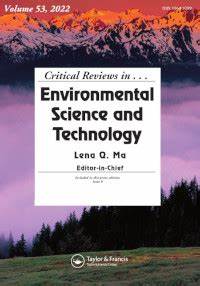农业土壤中抗生素及其耐药基因的系统分析
IF 11.4
1区 环境科学与生态学
Q1 ENVIRONMENTAL SCIENCES
Critical Reviews in Environmental Science and Technology
Pub Date : 2022-07-04
DOI:10.1080/10643389.2022.2094693
引用次数: 44
摘要
摘要抗生素的滥用和过度使用导致了抗微生物耐药性的上升,成为最严重的公共卫生威胁之一。由于牲畜和有机废物的广泛应用,抗生素和抗生素抗性基因(ARGs)在农业土壤中普遍存在。然而,在许多情况下,缺乏关于抗生素和ARGs在农业土壤中的发生、分布和风险的信息。在本研究中,基于135项独立研究的2225个观测结果,我们总结了不同肥料来源和土地利用模式下抗生素或ARGs的浓度或丰度,分析了关键环境因素对农业土壤中抗生素和ARGs发生的贡献,并强调了典型抗生素的潜在生态风险以及ARGs与可移动遗传元件(MGEs)之间的关系。结果表明,牛粪、鸡粪、猪粪和污泥是农业土壤中抗生素和ARGs的主要污染源,磺酰胺类、四环素类、氟喹诺酮类及其相应的ARGs是主要污染类型。土地利用类型、土壤和气候因素影响抗生素浓度和ARG丰度。MGEs在促进ARGs的传播中起着至关重要的作用,尤其是sul1基因与intI1密切相关。总之,我们的发现和未来探索这些主题的研究将有助于更好地管理农业土壤中的抗生素和ARG污染及其对人类健康的风险。图形摘要本文章由计算机程序翻译,如有差异,请以英文原文为准。
Antibiotics and antibiotic resistance genes in agricultural soils: A systematic analysis
Abstract Misuse and overuse of antibiotics have contributed to the rise of antimicrobial resistance as one of the top public health threats. Antibiotics and antibiotic resistance genes (ARGs) are prevalent in agricultural soils due to the widespread application of livestock and organic wastes. However, information about the occurrence, distribution, and risk of antibiotics and ARGs in agricultural soils is lacking for many scenarios. In this study, based on 2225 observations from 135 independent studies, we summarized the concentration or abundance of antibiotics or ARGs under different fertilizer sources and land-use patterns, analyzed the contributions of key environmental factors to the occurrence of antibiotics and ARGs in agricultural soils, and highlighted the potential ecological risk of typical antibiotics and the relationship between ARGs and mobile genetic elements (MGEs). Our results showed that cattle manure, chicken manure, swine manure, and sewage sludge were the primary pollution sources of antibiotics and ARGs in agricultural soils, and sulfonamides, tetracyclines, fluoroquinolones, and their corresponding ARGs were the main pollution types. Land-use type, soil, and climatic factors affected antibiotics concentration and ARG abundances. MGEs play a vital role in promoting the dissemination of ARGs, especially the sul1 gene is closely related to intI1. In conclusion, our findings and future research exploring these topics will contribute to better management of antibiotic and ARG contamination in agricultural soils and their risk to human health. Graphical abstract
求助全文
通过发布文献求助,成功后即可免费获取论文全文。
去求助
来源期刊
CiteScore
27.30
自引率
1.60%
发文量
64
审稿时长
2 months
期刊介绍:
Two of the most pressing global challenges of our era involve understanding and addressing the multitude of environmental problems we face. In order to tackle them effectively, it is essential to devise logical strategies and methods for their control. Critical Reviews in Environmental Science and Technology serves as a valuable international platform for the comprehensive assessment of current knowledge across a wide range of environmental science topics.
Environmental science is a field that encompasses the intricate and fluid interactions between various scientific disciplines. These include earth and agricultural sciences, chemistry, biology, medicine, and engineering. Furthermore, new disciplines such as environmental toxicology and risk assessment have emerged in response to the increasing complexity of environmental challenges.
The purpose of Critical Reviews in Environmental Science and Technology is to provide a space for critical analysis and evaluation of existing knowledge in environmental science. By doing so, it encourages the advancement of our understanding and the development of effective solutions. This journal plays a crucial role in fostering international cooperation and collaboration in addressing the pressing environmental issues of our time.

 求助内容:
求助内容: 应助结果提醒方式:
应助结果提醒方式:


